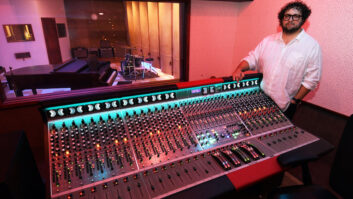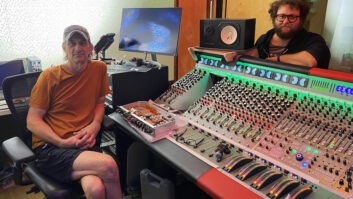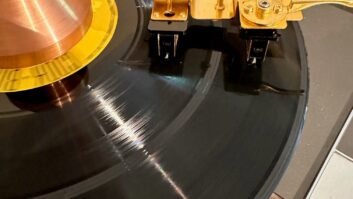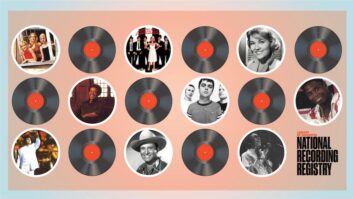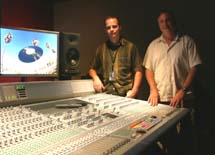
Los Angeles Recording School’s Mike Olson (left) and Steve Miller with a Digidesign ICON integrated console
The Los Angeles Recording School recently adopted two 32-fader Digidesign ICON integrated consoles for its Pro Tools HD-equipped studios, adding its name to the growing list of ICON-equipped, official Digidesign Training Partners.
Since opening its doors in 1985, the Los Angeles Recording School (formerly know as the Los Angeles Recording Workshop) has grown from a single classroom and renting time at local studios to offering a full-fledged curriculum with facilities that span 11 labs and eight studios in a building on the Sunset Strip in Hollywood.
“Digidesign has been a part of our curriculum for many years, dating back to the old Sound Tools 2-track software,” says Director of Education Steve Miller. The school has several Pro Tools HD-equipped rooms as well as numerous Pro Tools LE and Pro Tools M-Powered systems. “I don’t think you can overstate the importance of learning Pro Tools for any audio professional coming on the scene today. It’s great to have exposure to other platforms, too, but in terms of the job market, anyone involved with audio in a professional capacity needs to know Pro Tools.”
“As an official Digidesign Certified Training Location, the L.A. Recording School has produced a number of Certified Pro Tools Operators,” says Andy Cook, Digidesign’s manager of training and education. “This is an important distinction for aspiring audio engineers, especially in such Pro Tools-oriented regions as L.A.”
The school’s new ICON consoles are the first phase of a long-term transition, according to Miller. “As educators, we have to be conscious not only of the current state of technology, but of what things will look like 10 years from now. The ICONs are, for us, a long-term investment in tomorrow’s technology.”
Mike Olson, the school’s associate director of education, adds, “As a large portion of the industry moves steadily away from analog consoles and more toward computer-based solutions, having our students learn on the ICON system will better prepare them for the kind of technology they’ll encounter in the world of professional audio.”
“We still have a few traditional mixing consoles, but over time we’ve been moving toward ICON systems for all our rooms,” Miller explains. “Even people who have the budget and space to use a large-format analog console are discovering that they end up submixing on the [analog] console, but ultimately wind up mixing ‘inside the box.’ It makes so much more sense to work with a fully integrated control surface like the ICON.
“The ability to recall an entire session by loading in a project is tremendous for any facility where time is money. There’s no tedious recalling of analog console settings or patching and resetting outboard gear. We can go from one project to the next in minutes. Lots of producers are doing that these days. They’re not concentrating on a single track anymore. They’re jumping around from project to project, because they know they can.”
Miller also cites the ICON system’s ability to access a wide range of Pro Tools plug-ins as another important factor. “We use a lot of plug-ins,” he says. “So many people try to compare the sound quality between analog outboard gear and plug-ins, and I think that misses the point. Every plug-in has its own color and character, just like every piece of outboard gear. If you’re looking for a certain sound, you can just as likely find it in a plug-in as you can with hardware. There’s no hindrance in creativity or quality.”
Miller concludes, “We’re seeing a new generation of engineers who have grown up on PlayStations and the Internet, and these people have no prejudice about working within the computer or using a control surface. While there will always be people wanting to use vintage gear, it will become more and more of a niche market. I don’t see a long life for the traditional analog or digital console—the ICON is the wave of the future.”
For more information, visit www.digidesign.com/icon and www.recordingcareer.com.




